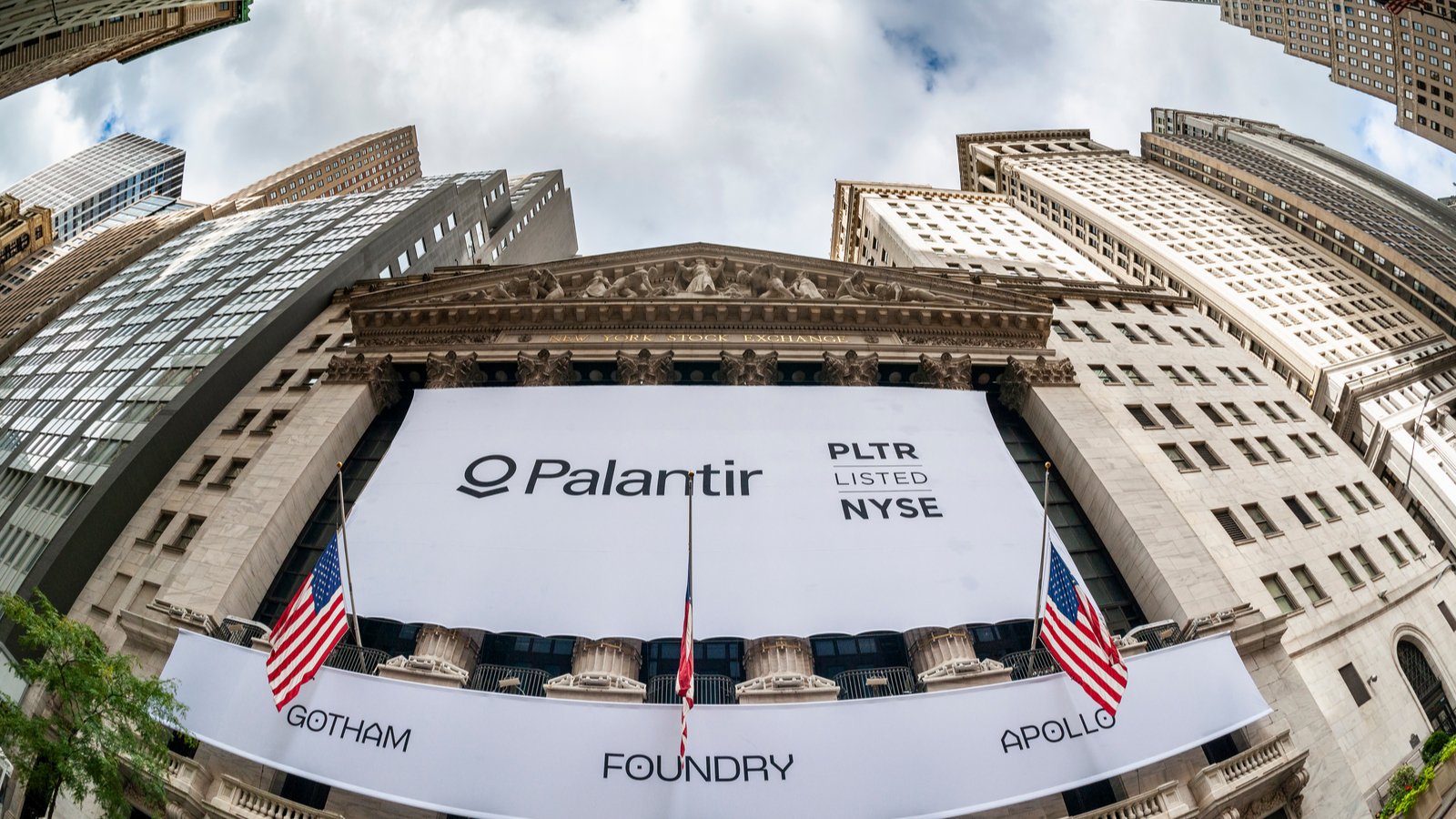
Palantir (NYSE:PLTR) stock jumped 25% last Tuesday after the data analytics firm announced a surge in AI-related demand. U.S. commercial revenues rose 70% year over year, driven by a 55% increase in customer count and rising contract values.
“AI has radically recalibrated customer expectations for software,” said chief technology officer Shyam Sankar during the company’s fourth-quarter earnings call. “Expectations at AIP and Foundry exceed by enabling the elegant integration of humans, software and AI to deliver operational outcomes quickly.”
Essentially, Palantir is finally seeing the benefits of the AI gold rush. Corporations are setting aside their misgivings about the often-controversial firm and paying top dollar for Palantir’s software-as-a-service (SaaS) offerings.
That’s quickly turning Palantir into a high-growth stock. Before Q4 earnings, analysts projected that growth rates would remain stuck at 20% for the next three years. That would have pegged Palantir’s intrinsic value at $13.50 per share, relatively in line with its 2023 share price range. New figures suggest that growth could be much higher, which raises Palantir’s fair value to $19.40, assuming no change in its business model.
However, the greatest driver of Palantir over the next 12 months will be market hype. Palantir is an AI firm caught in AI mania, and history tells us that prices will likely surge well beyond fair value during this honeymoon period.
Don’t bet against PLTR stock. Markets will happily send shares to $35 and beyond as AI continues to dominate the news.
Inbound Marketing
Palantir’s management has long prioritized its technology over its sales team. In 2022, the firm spent $467 million on sales and marketing but only saw a $319 million increase in revenues in 2023 (a 1-to-0.63 ratio). Comparable SAAS firms like GitLab (NASDAQ:GTLB) typically achieve closer to a 1-to-1 ratio, where every dollar spent on marketing increases sales by $1.
Palantir also focused heavily on large, customized contracts. Though they’re on track to generate $834 million of free cash flow this year, the lack of scalability meant my systems only projected a 10% annual cash flow growth rate over the long run.
But Palantir is increasingly seeing its products sell themselves. The rise of generative AI has forced corporations to find uses for artificial intelligence, even if they have no concrete reason for it. And Palantir’s two platforms are essentially a plug-and-play solution that allows corporate bosses to show they are doing something to turn their data troves into AI gold.
That’s turned the Denver-based firm into a breakout story. Palantir’s earnings call also included Q1 guidance of $120 million in adjusted operating income, a 58% year-over-year growth rate. And given the company’s history of conservative guidance, actual growth rates might be even higher. It’s one reason why Louis Navellier and his team have consistently singled out Palantir as a company that doesn’t need much to kick the stock into high gear.
Wall Street analysts are also quickly upping their estimates. The average 2025 earnings estimate has now been revised up 15.5%, a typically bullish signal for future gains. And the sudden influx of corporate clients will likely change Palantir’s high-touch business strategy to a more commoditized SaaS solution with fewer customizations. That would push Palantir’s marketing-to-sales-growth ratio closer to the 1-to-1 ratio and make the firm look more like a Salesforce (NYSE:CRM) or Workday (NASDAQ:WDAY) than a consulting firm like Accenture (NYSE:ACN). Plugging in these rosier expectations raises Palantir’s fair value to roughly $25-$30.
The AI Mania
However, these cold calculations fail to account for the market’s ability to take a good story too far.
Consider 2021, a year when electric vehicle startups dominated markets. According to investment firm Research Affiliates, the top 8 EV makers by value were worth almost as much as all traditional automakers combined despite producing less than 0.6% of industry sales.
Of course, this was ridiculous. Even if some companies might have become the next Tesla (NASDAQ:TSLA), it was impossible for all of them to do so. The combined valuations of the firms essentially assumed that no legacy carmaker would be competitors.
Nevertheless, shares of these moonshots continued to rise anyway. Lucid Motors (NASDAQ:LCID) was briefly worth over $90 billion, and even lesser-known players like Mullen Automotive (NASDAQ:MULN) commanded valuations close to $200 million.
A similar pattern is quickly emerging in AI. In December, French AI startup Mistral reached a deal that valued the 22-person startup at $2 billion, despite lagging current large language models by at least a generation. And Super Micro Computer (NASDAQ:SMCI), a company that installs AI servers, has seen its share price rise 3.5 times faster than its expected earnings. The F-graded stock now exceeds its justified value of $450 by roughly 50%.
Palantir will likely see a similar stampede in its shares. The company is finding itself in the right place at exactly the right time, and markets have long had a habit of extrapolating near-term trends into eternity
In January, I wrote that the coming AI wars would help Palantir succeed on a fundamental level:
In a minor twist, the rise of the AI Wars also could trigger interest from corporate America. Many firms have become wary of sending copyrighted data (or any other sensitive information) to tech giants, especially with the rise of generative AI…
Meanwhile, firms like Palantir operate as platforms, which mean they provide the data analysis tools, while leaving control of data to their customers
Now that other AI companies are breaking away from their fundamental values, we can expect Palantir to temporarily do the same. Short-sellers beware: Palantir could easily top $30… or even $40… on AI mania.
On the date of publication, Thomas Yeung held no positions in any stock mentioned in this piece. The opinions expressed in this article are those of the writer, subject to the InvestorPlace.com Publishing Guidelines.
